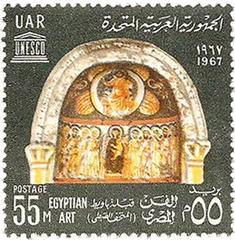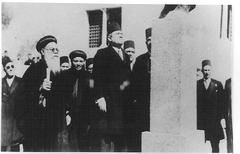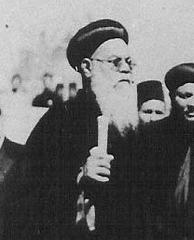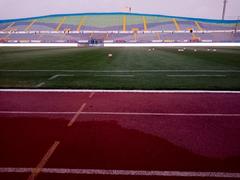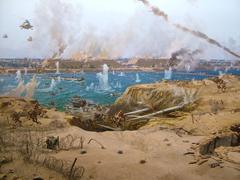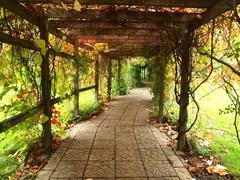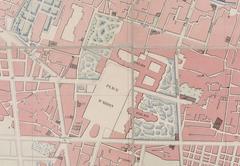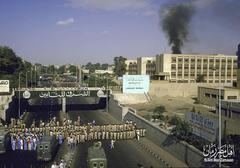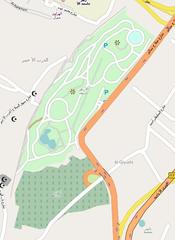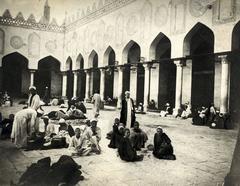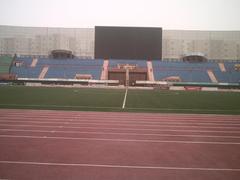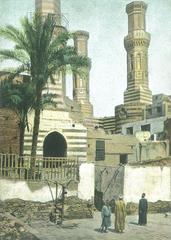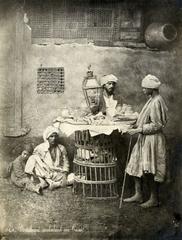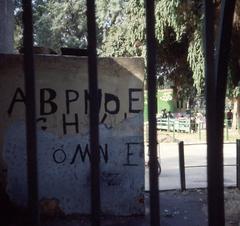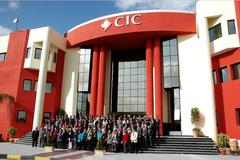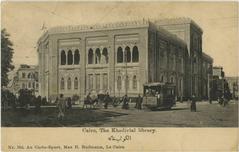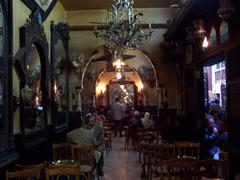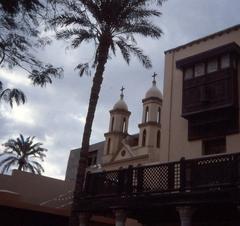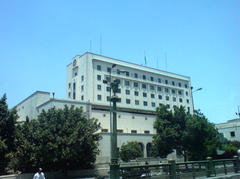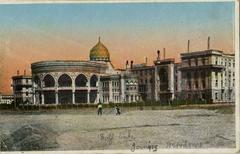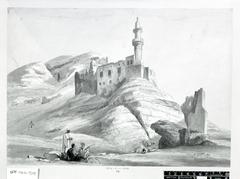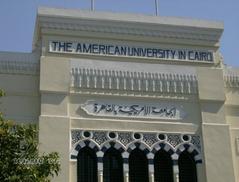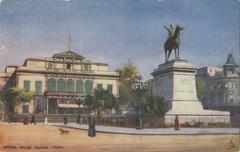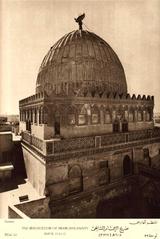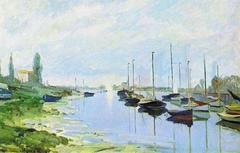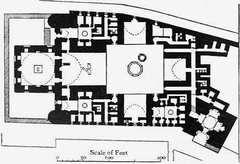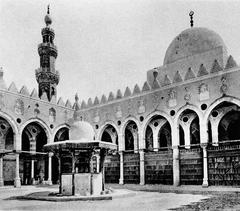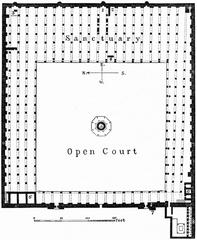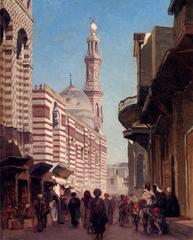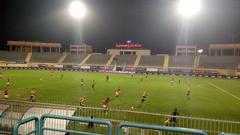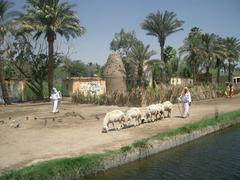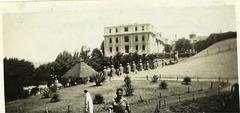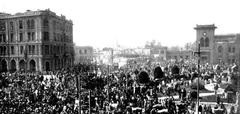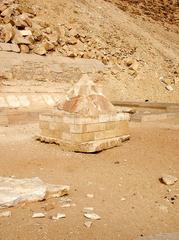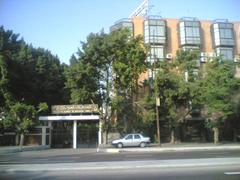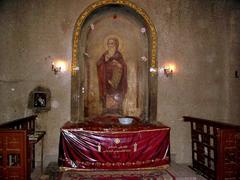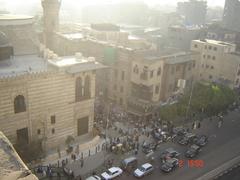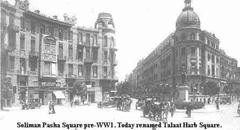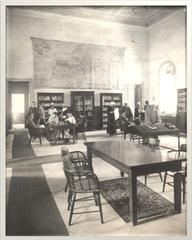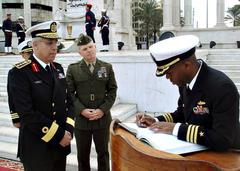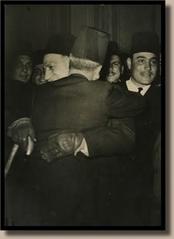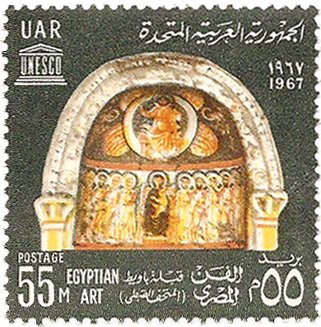
Visiting Al-Fustat: A Comprehensive Guide to Al Nozha, Egypt
Date: 23/07/2024
Introduction
Nestled in the heart of Cairo, الفسطاط (Al-Fustat) presents a captivating journey through time, offering a unique blend of history, culture, and architectural wonders. As the first Islamic capital of Egypt, established in 641 AD by the Arab general Amr ibn al-As, Al-Fustat holds a pivotal place in the annals of Egyptian history. Located strategically on the eastern bank of the Nile River, near the ancient city of Memphis, this city quickly transitioned from a military garrison to a bustling urban center (Islamic Art).
Al-Fustat’s architectural landscape is a testament to its rich cultural heritage, featuring notable structures such as the Mosque of Amr ibn al-As, the first mosque built in Egypt and Africa, and the Nilometer on Rhoda Island, a prime example of early Islamic engineering. The city also emerged as a major economic hub due to its strategic location along key trade routes, fostering a vibrant market culture that attracted merchants from across the Mediterranean, the Red Sea, and the Indian Ocean (Encyclopaedia Britannica).
Culturally, Al-Fustat was a melting pot, home to a diverse population including Arabs, Copts, Jews, and Greeks, who coexisted and contributed to the city’s dynamic cultural life. This multicultural fabric is evident in its architecture, art, and daily life, with significant contributions from the Coptic community in particular (Islamic History). Despite its decline starting in the 10th century and the devastation suffered during the Crusades, the remnants of Al-Fustat continue to offer invaluable insights into its historical and cultural significance (History of Egypt).
Today, Al-Fustat’s legacy is preserved and showcased through various efforts, such as the Al-Fustat Archaeological Park and the National Museum of Egyptian Civilization (NMEC), ensuring that visitors can immerse themselves in its rich past while navigating the modern cityscape (Egyptian Ministry of Antiquities).
Table of Contents
- Introduction
- Historical Background
- Major Attractions
- Visitor Information
- Preservation and Challenges
- Visitor Experience
- Conclusion
- FAQ
Historical Background
Foundation and Early History
الفسطاط, also known as Fustat, holds a significant place in Egyptian history as the first capital of Islamic Egypt. Founded in 641 AD by the Arab general Amr ibn al-As following the Muslim conquest of Egypt, Fustat was strategically located on the eastern bank of the Nile River, near the ancient city of Memphis. The city was established as a military garrison town and quickly grew into a bustling urban center.
Urban Development and Architecture
Fustat’s urban development was marked by its unique architectural style, which combined elements of Byzantine and Islamic design. The city was laid out in a grid pattern, with wide streets and numerous public buildings, including mosques, markets, and baths. One of the most notable architectural achievements of Fustat is the Mosque of Amr ibn al-As, the first mosque built in Egypt and Africa. This mosque served as a religious and social hub for the city’s inhabitants and remains a significant historical site today (Islamic Art).
Economic Significance
Fustat quickly became a major economic center due to its strategic location along trade routes connecting the Mediterranean Sea, the Red Sea, and the Indian Ocean. The city was renowned for its production of high-quality pottery, glassware, and textiles, which were exported to various parts of the world. The bustling markets of Fustat attracted merchants from different regions, contributing to the city’s prosperity and cultural diversity (Encyclopaedia Britannica).
Cultural and Religious Influence
As the first Islamic capital of Egypt, Fustat played a crucial role in the spread of Islam and Islamic culture in the region. The city was home to numerous scholars, poets, and theologians who contributed to the intellectual and cultural life of the Islamic world. The establishment of educational institutions and libraries in Fustat facilitated the exchange of knowledge and ideas, making it a center of learning and scholarship (Islamic History).
Decline and Transformation
Fustat’s decline began in the 10th century when the Fatimid Caliphate established a new capital, Cairo, just a few kilometers to the north. Despite this, Fustat remained an important urban center until the 12th century when it suffered significant damage during the Crusades. In 1168, the city was deliberately set on fire by its own inhabitants to prevent it from falling into the hands of the Crusaders. This event marked the beginning of Fustat’s decline as a major urban center (History of Egypt).
Archaeological Discoveries
The historical significance of Fustat has been highlighted by numerous archaeological discoveries over the years. Excavations have uncovered a wealth of artifacts, including pottery, coins, and architectural remains, providing valuable insights into the city’s history and daily life. These findings have helped historians and archaeologists piece together the story of Fustat and its role in the broader context of Egyptian and Islamic history (Archaeology Magazine).
Preservation and Modern Significance
Today, the remnants of Fustat are preserved as part of the Al-Fustat Archaeological Park, which aims to protect and showcase the city’s historical heritage. The park includes several restored buildings and structures, offering visitors a glimpse into the city’s past. Efforts to preserve and study Fustat continue, highlighting its enduring significance as a symbol of Egypt’s rich and diverse history (Egyptian Ministry of Antiquities).
Major Attractions
Amr Ibn Al-As Mosque
The Amr Ibn Al-As Mosque, established in 641-642 AD, is one of the oldest mosques in Africa. Built by Amr Ibn Al-As, the commander who led the Muslim conquest of Egypt, this mosque has undergone numerous renovations and expansions over the centuries while retaining its historical significance and architectural beauty. Visitors can admire its vast courtyard, elegant arches, and the serene ambiance that reflects its long-standing religious importance.
- Visiting Hours: Daily from 9 AM to 5 PM.
- Tickets: Entry is free.
- For more details, visit the official site.
Coptic Museum
Founded in 1908, the Coptic Museum houses the world’s most extensive collection of Coptic Christian artifacts. Its exhibits span from the early Christian period in Egypt to the Islamic era, showcasing textiles, manuscripts, and religious icons. Located in the heart of Old Cairo, the museum is easily accessible for tourists. The intricate woodwork and stone carvings are particularly noteworthy.
- Visiting Hours: Daily from 9 AM to 4 PM.
- Tickets: Entry fee is EGP 100 for adults and EGP 50 for students.
- More information can be found on the Coptic Museum’s website.
Babylon Fortress
The Babylon Fortress, a Roman fortress built around the 1st century AD, played a crucial role in the defense of the region and later became a significant site for the Coptic Christian community. The fortress is home to several churches, including the Hanging Church and the Church of St. Sergius and Bacchus. Visitors can explore the ancient walls and towers, which offer a glimpse into the military architecture of the Roman era.
- Visiting Hours: Daily from 8 AM to 5 PM.
- Tickets: Entry is free.
- For further reading, check out this historical overview.
Hanging Church (Saint Virgin Mary’s Coptic Orthodox Church)
The Hanging Church, also known as Saint Virgin Mary’s Coptic Orthodox Church, is one of the oldest churches in Egypt, dating back to the 3rd century AD. Built on the southern gate of the Roman Fortress of Babylon, the church is renowned for its beautiful wooden ceiling, which resembles the hull of Noah’s Ark, and its collection of ancient icons. The church remains an active place of worship and a popular tourist destination.
- Visiting Hours: Daily from 9 AM to 5 PM.
- Tickets: Entry is free.
- More details can be found on the Hanging Church’s official page.
Ben Ezra Synagogue
Originally a Coptic church, the Ben Ezra Synagogue was converted into a synagogue in the 9th century. It is one of the oldest synagogues in Egypt and is famous for the discovery of the Cairo Geniza, a treasure trove of Jewish manuscripts. The synagogue’s architecture blends Jewish, Christian, and Islamic styles, reflecting the region’s diverse cultural influences.
- Visiting Hours: Daily from 9 AM to 4 PM.
- Tickets: Entry fee is EGP 80 for adults and EGP 40 for students.
- For more information, visit the Ben Ezra Synagogue’s page.
Fustat Pottery Village
The Fustat Pottery Village is a vibrant artisan community where visitors can witness traditional pottery-making techniques. The village is home to numerous workshops where skilled craftsmen create beautiful pottery pieces using age-old methods. Tourists can participate in pottery-making classes, purchase unique souvenirs, and learn about the history and significance of pottery in Egyptian culture.
- Visiting Hours: Daily from 10 AM to 6 PM.
- Tickets: Entry is free; pottery classes have separate fees.
- More details can be found on the Fustat Pottery Village’s website.
Al-Azhar Park
Located near الفسطاط, Al-Azhar Park offers a green oasis in the heart of Cairo. Developed on a former landfill site, the park opened to the public in 2005. It features beautifully landscaped gardens, fountains, and walking paths, providing a peaceful retreat from the bustling city. The park also offers stunning views of the Cairo skyline and historic landmarks, including the Citadel and the Sultan Hassan Mosque.
- Visiting Hours: Daily from 9 AM to 10 PM.
- Tickets: Entry fee is EGP 25 for adults and EGP 15 for children.
- For more information, visit the Al-Azhar Park’s official site.
Gayer-Anderson Museum
The Gayer-Anderson Museum, located near الفسطاط, is housed in two historic buildings dating back to the 16th and 17th centuries. Named after Major R.G. Gayer-Anderson, who restored the buildings and filled them with an eclectic collection of art, furniture, and artifacts from various cultures, the museum’s exhibits include Islamic art, Persian carpets, and ancient Egyptian relics. The intricate woodwork and mashrabiya screens in the buildings are also highlights.
- Visiting Hours: Daily from 9 AM to 4 PM.
- Tickets: Entry fee is EGP 60 for adults and EGP 30 for students.
- More details can be found on the Gayer-Anderson Museum’s page.
Visitor Information
Visiting Hours and Tickets
Fustat Archaeological Park is open from 9 AM to 5 PM daily. Tickets are priced at [insert price]. It’s advisable to book tickets in advance, especially during peak tourist seasons.
Accessibility
Most historical sites in Al-Fustat are accessible to visitors with disabilities. The NMEC offers ramps and elevators for easy access.
Travel Tips
- Guided Tours: Available at major sites like the Mosque of Amr ibn al-As and NMEC. Guided tours provide in-depth historical context and are highly recommended.
- Nearby Attractions: Don’t miss the Coptic Cairo area, which includes the Hanging Church and the Coptic Museum.
- Special Events: Check the NMEC’s official website for information on temporary exhibitions and cultural events.
Preservation and Challenges
Preserving Al-Fustat’s cultural heritage presents several challenges. Urban development, pollution, and neglect have threatened many historical sites. Efforts by the Egyptian government and international organizations aim to protect and restore these invaluable cultural assets.
One notable preservation project is the restoration of the Mosque of Amr ibn al-As, which has involved extensive research and collaboration between Egyptian and international experts. These efforts ensure that future generations can continue to appreciate and learn from Al-Fustat’s rich cultural legacy.
Visitor Experience
For visitors, Al-Fustat offers a unique opportunity to explore Egypt’s Islamic heritage and its multicultural past. Guided tours of the Mosque of Amr ibn al-As, the Coptic churches, and the NMEC provide insights into the city’s historical and cultural significance. The bustling markets and traditional crafts workshops offer a glimpse into the daily life and economic activities of Al-Fustat’s inhabitants.
Visitors can also enjoy the scenic beauty of the Nile and the surrounding landscapes, which have inspired poets, artists, and travelers for centuries. The combination of historical sites, cultural experiences, and natural beauty makes Al-Fustat a must-visit destination for anyone interested in Egypt’s rich and diverse heritage.
Conclusion
In summary, Al-Fustat’s cultural significance is multifaceted, encompassing its historical role as the first Islamic capital of Egypt, its architectural and artistic heritage, its multicultural and economic vibrancy, and its ongoing contributions to education and intellectual life. Efforts to preserve and celebrate this heritage ensure that Al-Fustat remains a vital part of Egypt’s cultural landscape.
FAQ
What are the visiting hours for Fustat? Fustat Archaeological Park is open from 9 AM to 5 PM daily.
How much do tickets to Fustat cost? Tickets are priced at [insert price].
Are there guided tours available? Yes, guided tours are available and provide in-depth information about the city’s history and significance.
What nearby attractions should I visit? Nearby attractions include the Mosque of Amr ibn al-As, the Coptic Museum, and the Hanging Church.
